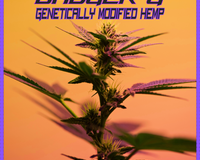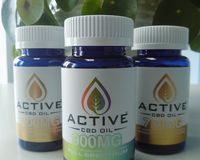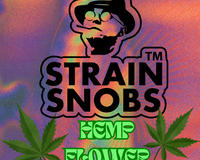The numbers used to differentiate the delta-8, delta-9, and delta-10 versions of THC can understandably be confusing unless you happen to have a background in chemistry. Let us break down why each version of THC has a different number, and what they mean!
Tetrahydrocannabinol, or THC, is a base structure to which small changes can be made without altering what is essentially the skeleton. The carbon rings making up THC can almost be thought of as a charm bracelet, where the overall form (skeleton) of a bracelet exists regardless of which charms are added or removed.

The bracelet’s charms can be changed so the bracelet appears to be completely different, but it is still a charm bracelet. Molecules in chemistry are similar, where charms, known as functional groups, can be added, removed or rearranged along the underlying skeleton.
When the backbone of the structure remains the same, but the functional groups (charms) are rearranged, you create molecules called isomers. So each rearrangement of charms or new layouts of the bracelet would be similar to a unique isomer.

Now for the numbers: Think of each link in the bracelet as a possible position a charm could be placed, and assign them a number, around the bracelet, starting at the clasp. So if there are 6 links, or places to hook charms, you could easily tell someone else how to reproduce the bracelet’s charm layout by saying which charm goes on which number link around the bracelet.

The number used in the names of each different THC molecule is essentially the number of the link where the charm is located on the bracelet. Each carbon atom in the THC molecule is assigned a number, which explains to chemists where the functional groups (charms) are located along the carbon backbone (links). The difference in number between each version of THC is actually the position of a double bond. Double bonds are two pairs of electrons shared between two carbon atoms, and for THC, it is equivalent to the charm.
This double bond can be formed in different positions around the THC molecule, much like you could move a charm around the bracelet. If the double bond is between carbon 8 and 9, it is called delta-8-THC. When the double bond is between carbons 9 and 10, the molecule is delta-9-THC. And you may have guessed that delta-10-THC will be between carbons 10 and 11, however due to the way the carbons are numbered, delta-10 actually has a double bond between carbon 10 and carbon 10a. 
Delta-8, delta-9 and delta-10 are known as THC isomers, since they all have the same tetrahydrocannabinol backbone with only a functional group (charm) rearranged. Versions of THC and CBD are actually isomers as well, where the same backbone can be converted to one another easily. In this instance, it is almost as if the two ends of the bracelet are joined together to make a complete ring as seen in the image below.

Do delta 1, delta 2, and delta 3 THC exist?
There are different systems to number carbon rings in chemistry which can easily lead to confusion. The more commonly used system currently is known as dibenzopyran numbering. Under the monoterpenoid numbering system, which was used in the past more frequently, the numbers are different for the same THC isomer. They are identical except for the name. Research from the 60's and 70's frequently uses the monoterpenoid numbering system. Therefore, when reading older articles on delta-9-THC, it is commonly referred to as delta-1-THC. The image shows how the carbons along the THC backbone were assigned different numbers in each system.

Dibenzopyran = Monoterpenoid
delta-8-THC = delta-6-THC
delta-9-THC = delta-1-THC
delta-10-THC = delta-2-THC
delta-6a-THC = delta-3-THC
Another THC isomer is also mentioned in research using the monoterpenoid numbering system, delta-3-THC. This isomer is currently called delta-6a-THC under the dibenzopyran system. This one can be confusing because it is also often written delta-6a,10a-THC. Delta-6a is generally produced synthetically, and it is not known to be derived via direct isomerization of naturally occurring hemp plants cannabinoids at this time. The double bond is between carbon 6a and carbon 10a, as shown in the image.

Do these THC isomers all affect the body the same way?
In general, the isomers are nearly identical and the body reacts and processes these THC backbones in very similar ways. Each molecule follows the same metabolic pathways and interacts with the endocannabinoid system. They are close enough that most common drug tests are not able to tell the difference, and each could cause a positive result for THC. However, the tiny difference in the structure of the THC isomers does affect how the molecule’s shape can interact with each receptor in the body. The interaction between the receptor and the molecule produces an effect, so the isomers can feel different to people from one to another. Research indicates delta-9-THC is the most potent at the CB1 receptor compared to delta-8 or delta-10. The CB1 receptor is involved in producing the classic cannabis high.
No clear consensus exists whether delta 10 vs delta 8 is more potent when used by people. Many claim they find delta-8 to produce relaxation in the body, pain relief and calmness in the mind that is often associated with indica medical marijuana strains. Reports about delta-10 commonly describe an effect more associated with sativa strains, including psychoactive properties and uplifting mental effects such as alertness and creativity. Keep in mind that everyone is different and experiences may vary, so with any new cannabinoid you decide to try, remember to start small and gradually increase once you know how your body and mind responds.
How safe are these THC isomers?
Since delta-8 and delta-10 are so close in structure to delta-9-THC, the body responds in a fairly similar way to both compounds. The same considerations one gives to cannabis plants with delta-9-THC should also be given to delta-10 products. Delta-9-THC and its isomers, including delta-8 and delta-10, are generally considered by experts to be well tolerated by most people in common, small to moderately sized doses. The active dose of THC isomers are very low compared to the amounts known to be dangerous, so the low doses most people use are generally considered relatively safe. One reason for this is the receptors activated by these cannabinoids are not located in areas of the body that maintain critical functions such as breathing, so these life-sustaining processes are not affected directly by the THC isomers.
Keep in mind however, unlike delta-9 and delta-8, much less is known about delta-10 specifically from the available research (please note from safety concerns). Since research done in humans is not available and only the similarities between the THC isomers provide clues to its effect on the body, reasonable consideration should be used if trying delta-10-THC. Every individual is different, so each person’s experience could potentially differ even at the same dosage. Our mantra for using cannabinoids is: remember to start with a low dose and gradually increase, so you can judge how your body reacts to a low dose initially, then add more slowly if desired. Especially with products like edibles, the THC may take longer to absorb and produce an effect than expected, and taking another dose too quickly is the easiest way to increase the chance of undesirable results.

Are people using hemp-derived THC isomers with CBD and CBG?
THC isomers, CBD, and CBG are often utilized by people for many of the same concerns as the others. In other words, there is overlap in the reasons people take these compounds, and research suggests they work better in combination than alone.
Ideally, these THC isomers are available as potentially helpful additions to other cannabinoids, such as CBD, in order to provide a more complete spectrum of cannabis sativa plant benefits via the entourage effect. If you are not familiar with this term, the entourage effect refers to the increased benefits when using a combination of cannabinoids and terpenes rather than one isolated molecule from the cannabis plant. For example, CBD and THC often enhance the benefits of one another, while CBD helps reduce the side effects of THC, including intoxication.
How do the effects of these THC isomers compare to CBD and CBG?
The biggest difference between the hemp-derived THC isomers, such as delta-8 and delta-10, and the previously available hemp-derived cannabinoids, including CBD and CBG, is that the THC isomers may produce intoxicating effects (like psychoactive effects).
Generally, CBD’s reported benefits are best described as the absence of a previous concern. CBD does not produce effects such as intoxication or euphoria (it`s approved at the federally legal level), so it is not generally appropriate to be looking for an effect other than a return to baseline well-being or simply feeling normal. For example, when people use CBD for anxiety, the same medical benefits they seek is to no longer feel anxious but not to achieve a further positive mood boost such as euphoria or decreased inhibition. The same is generally true for CBG which is considered non-intoxicating. There is basically no recreational value, or fun, from taking CBD and CBG compared to THC or a drug (psychoactive substance). For some people who were hoping for an effect such as noticeable relaxation or a strong change in the way they feel, they can often be disappointed with CBD and CBG. For those who were hoping for a little more oomph to the effects from hemp and marijuana plants cannabinoids, they should be pleased to finally have access to high quality delta-8, and to delta-10 in the near future as well, but not everywhere at the federal level, unfortunately.
If you are interested in a description of the effects of delta-8-THC on central nervous system, check out our other blog, Delta-8 Dab Review!
“Biological activity of the tetrahydrocannabinols”
https://www.sciencedirect.com/science/article/abs/pii/S0378874180810026
“Structure-Activity Relationships of the Cannabinoids”
https://archives.drugabuse.gov/sites/default/files/monograph79.pdf
“Comparison of acute oral toxicity of cannabinoids in rats, dogs and monkeys”
https://pubmed.ncbi.nlm.nih.gov/4199474/
“Enantiomers, Diastereomers, Identical or Constitutional Isomers” https://www.chemistrysteps.com/enantiomers-diastereomers-constitutional-isomers/

Check out our wide selection of delta-8 and other hemp-derived cannabinoid products! Consider adding these to your hemp routine for a complete cannabis experience!


























